Keynotes at DATE 2021
Keynote 1  |
Keynote 2  |
Keynote 3  |
Keynote 4  |
Keynote 5  |
Keynote 6  |
| Keynote 1 | Quantum Supremacy Using A Programmable Superconducting Processor |
| Speaker | John Martinis Google, UCSB and Quantala, United States |
Abstract
The promise of quantum computers is that certain computational tasks might be executed exponentially faster on a quantum processor than on a classical processor. A fundamental challenge is to build a high-fidelity processor capable of running quantum algorithms in an exponentially large computational space. Here we report the use of a processor with programmable superconducting qubits to create quantum states on 53 qubits, corresponding to a computational state-space of dimension 2^53 (about 10^16). Measurements from repeated experiments sample the resulting probability distribution, which we verify using classical simulations. Our Sycamore processor takes about 200 seconds to sample one instance of a quantum circuit a million times—our benchmarks currently indicate that the equivalent task for a state-of-the-art classical supercomputer would take approximately 10,000 years. This dramatic increase in speed compared to all known classical algorithms is an experimental realization of quantum supremacy for this specific computational task, heralding a much-anticipated computing paradigm.
Biography
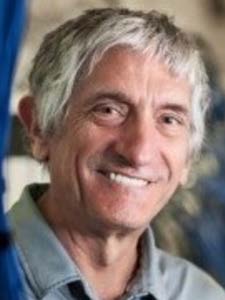
John Martinis did pioneering experiments in superconducting qubits in the mid 1980’s for his PhD thesis. He has worked on a variety of low temperature device physics during his career, focusing on quantum computation since the late 1990s. He was awarded the London Prize in Low temperature physics in 2014 for his work in this field. From 2014 to 2020 he worked at Google to build a useful quantum computer, culminating in a quantum supremacy experiment in 2021.
| Keynote 2 | Superconducting Quantum Materials and Systems (SQMS) – a new DOE National Quantum Information Science Research Center |
| Speaker | Anna Grassellino National Quantum Information Science Superconducting Quantum Materials and Systems Center, Fermilab, United States |
Abstract
In this talk I will describe the mission, goals and the partnership strengths of the new US National Quantum Information Research Center SQMS. SQMS brings the power of DOE laboratories, together with industry, academia and other federal entities, to achieve transformational advances in the major cross-cutting challenge of understanding and eliminating the decoherence mechanisms in superconducting 2D and 3D devices, with the final goal of enabling construction and deployment of superior quantum systems for computing and sensing. SQMS combines the strengths of an array of experts and world-class facilities towards these common goals.
Materials science experts will work in understanding and mitigating the key limiting mechanisms of coherence in the quantum regime. Coherence time is the limit on how long a qubit can retain its quantum state before that state is ruined by noise. It is critical to advancing quantum computing, sensing and communication. SQMS is leading the way in extending coherence time of superconducting quantum systems thanks to world-class materials science and through the world leading expertise in superconducting RF cavities which are integrated with industry-designed and -fabricated computer chips.
Leveraging new understanding from the materials development, quantum device and quantum computing researchers will pursue device integration and quantum controls development for 2-D and 3-D superconducting architectures. One of the ambitious goals of SQMS is to build and deploy a beyond-state-of-the-art quantum computer based on superconducting technologies. Its unique high connectivity will provide unprecedented opportunity to explore novel quantum algorithms. SQMS researchers will ultimately build quantum computer prototypes based on 2-D and 3-D architectures, enabling new quantum simulation for science applications.
Biography

Anna Grassellino is the Director of the National Quantum Information Science Superconducting Quantum Materials and Systems Center, a Fermilab Senior Scientist and the head of the Fermilab SQMS division. Her research focuses on radio frequency superconductivity, in particular on understanding and improving SRF cavities performance to enable new applications spanning from particle accelerators to detectors to quantum information science. Grassellino is a fellow of the American Physical Society, and the recipient of numerous awards for her pioneering contributions to SRF technology, including the 2017 Presidential Early Career Award, the 2017 Frank Sacherer Prize of the European Physical Society, the 2016 IEEE PAST Award, the 2016 USPAS prize and a $2.5 million DOE Early Career Award. She holds a Ph.D. in physics from the University of Pennsylvania and a master’s of electronic engineering from the University of Pisa, Italy.
| Keynote 3 | Sustainable High-Performance Computing Via Domainspecific Accelerators |
| Speaker | William J. Dally Stanford University and NVIDIA, United States |
Abstract
High-Performance computers require continued scaling of performance and efficiency to handle more demanding applications and scales. With the end of Moore’s Law and Dennard Scaling, continued performance scaling will come primarily from specialization. Specialized hardware engines can achieve performance and efficiency from 10x to 10,000x a CPU through specialization, parallelism, and optimized memory access. Graphics processing units are an ideal platform on which to build domainspecific accelerators. They provide very efficient, high performance communication and memory subsystems - which are needed by all domains. Specialization is provided via “cores”, such as tensor cores that accelerate deep learning or ray-tracing cores that accelerate specific applications.
Biography
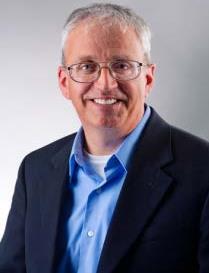
Bill is Chief Scientist and Senior Vice President of Research at NVIDIA Corporation and a Professor (Research) and former chair of Computer Science at Stanford University. Bill is currently working on developing hardware and software to accelerate demanding applications including machine learning, bioinformatics, and logical inference. He has a history of designing innovative and efficient experimental computing systems. While at Bell Labs Bill contributed to the BELLMAC32 microprocessor and designed the MARS hardware accelerator. At Caltech he designed the MOSSIM Simulation Engine and the Torus Routing Chip which pioneered wormhole routing and virtual-channel flow control. At the Massachusetts Institute of Technology his group built the J-Machine and the MMachine, experimental parallel computer systems that pioneered the separation of mechanisms from programming models and demonstrated very low overhead synchronization and communication mechanisms. At Stanford University his group developed the Imagine processor, which introduced the concepts of stream processing and partitioned register organizations, the Merrimac supercomputer, which led to GPU computing, and the ELM low-power processor. Bill is a Member of the National Academy of Engineering, a Fellow of the IEEE, a Fellow of the ACM, and a Fellow of the American Academy of Arts and Sciences. He has received the ACM Eckert-Mauchly Award, the IEEE Seymour Cray Award, the ACM Maurice Wilkes award, the IEEE-CS Charles Babbage Award, and the IPSJ FUNAI Achievement Award. He currently leads projects on computer architecture, network architecture, circuit design, and programming systems. He has published over 250 papers in these areas, holds over 160 issued patents, and is an author of the textbooks, Digital Design: A Systems Approach, Digital Systems Engineering, and Principles and Practices of Interconnection Networks.
| Keynote 4 | Cyber-Physical Systems for Industry 4.0: An Industrial Perspective |
| Speaker | Philippe Magarshack STMicroelectronics, France |
Abstract
Since 2016, Philippe Magarshack is MDG Group Vice President at ST Microelectronics, in charge of Microcontrollers and Digital ICs Group (MDG) Strategy, Technology & System Architecture. Magarshack was President of the Minalogic Collaborative R&D Cluster in Grenoble France, from 2014 to 2020. In 2012, he was VP for Design Enablement & Services, with a focus on the 28nm FD-SOI design ecosystem, and then during 2015, CTO of the Embedded Processing Solutions. In 2005, Magarshack was appointed Group VP and GM of ST’s Central CAD and Design Solutions for technologies ranging from CMOS to BICMOS and embedded NVM.
Biography
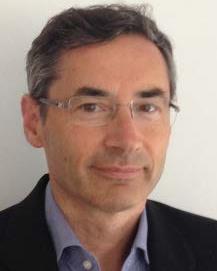
In 1994, Magarshack joined the Central R&D Group of SGS-THOMSON Microelectronics (now STMicroelectronics), where he held several roles in CAD and Libraries management for advanced integrated-circuit manufacturing processes. From 1985 to 1989, Magarshack worked as a microprocessor designer at AT&T Bell Labs in the USA. Magarshack graduated with an engineering degree in Physics from Ecole Polytechnique, Paris, France, and with an Electronics Engineering degree from Ecole Nationale Supérieure des Télécommunications in Paris, France.
| Keynote 5 | Autonomy: One Step Beyond on Commercial Aviation |
| Speaker | Pascal Traverse Airbus, France |
Abstract
Autonomy is in the air: on one hand, automation is clearly a lever to improve safety margins; on another hand technologies are maturing, pulled by the automotive market. In this context, Airbus is building a concept airplane from a blank sheet with the objective to improve human-machine teaming for better overall performance. Foundation of this new concept is that when they are made aware of the “big picture” with enough time to analyze it, humans are still the best to make strategic decisions. Autonomy technologies are the main enabler of this concept. Benefit are expected both in a two-crew cockpit and eventually in Single Pilot Operations.
Biography
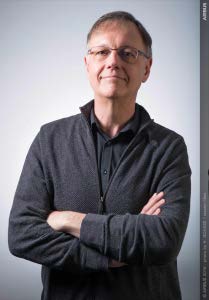
Pascal Traverse is General Manager for the Autonomy “fast track” at Airbus. Autonomy is a top technical focus area for Airbus. The General Manager creates a vision, coordinates R&T activities with the objective to accelerate the increase of knowledge in Airbus. Before his nomination last year, Pascal was coordinating Airbus Commercial R&T activities related to the cockpit and flight operations. Earlier in his carrier, Pascal participated in the A320/A330/A340/A380 Fly-by-Wire developments, certification harmonization with FAA and EASA, management of Airbus safety activities and even of qualities activities in the A380 Final Assembly Line. Pascal has Master and Doctorate’s degrees in embedded systems from N7, conducted research in LAAS and UCLA and is a 3AF Fellow.
| Keynote 6 | Privacy this unknown - The new design dimension of computing architecture |
| Speaker | Mauro Conti University of Padua, Italy |
Abstract
The Security is often presented as being based on the CIA triad, where the “C” actually stands for Confidentiality. Indeed, in many human activities we like to keep some(things) confidential, or “private”; this is particularly true when these activities are done in the cyber world where a lot of our private data are transmitted, processed, and stored.
In this talk, we will first introduce the concept of privacy, and then see how this is interlaced with two important research threads. First we’ll discuss how computer architectures and particularly “trusted components” in processors could be helpful to protect privacy, allowing us to trust remote systems. Finally, we’ll discuss the issues of side-channels (in a broad sense, not only in processors) that could lead to leak of private information.
Biography
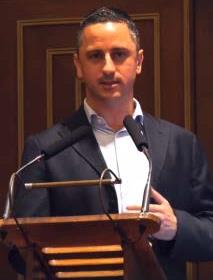
Mauro Conti is Full Professor at the University of Padua, Italy. He is also affiliated with TU Delft and University of Washington, Seattle. He obtained his Ph.D. from Sapienza University of Rome, Italy, in 2009. After his Ph.D., he was a Post-Doc Researcher at Vrije Universiteit Amsterdam, The Netherlands. In 2011 he joined as Assistant Professor the University of Padua, where he became Associate Professor in 2015, and Full Professor in 2018. He has been Visiting Researcher at GMU, UCLA, UCI, TU Darmstadt, UF, and FIU. He has been awarded with a Marie Curie Fellowship (2012) by the European Commission, and with a Fellowship by the German DAAD (2013). His research is also funded by companies, including Cisco, Intel, and Huawei. His main research interest is in the area of Security and Privacy. In this area, he published more than 350 papers in topmost international peer-reviewed journals and conference. He is Area Editor-in-Chief for IEEE Communications Surveys & Tutorials, and Associate Editor for several journals, including IEEE Communications Surveys & Tutorials, IEEE Transactions on Information Forensics and Security, IEEE Transactions on Dependable and Secure Computing, and IEEE Transactions on Network and Service Management. He was Program Chair for TRUST 2015, ICISS 2016, WiSec 2017, ACNS 2020, and General Chair for SecureComm 2012 and ACM SACMAT 2013. He is Senior Member of the IEEE and ACM. He is a member of the Blockchain Expert Panel of the Italian Government.
